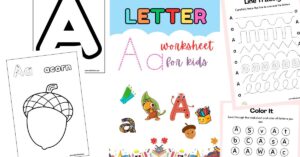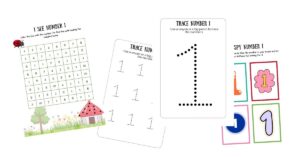Kids who struggle with reading often prefer to avoid the activity because it’s hard. But that’s not their fault. Usually, reading struggles happen due to a learning disability or difficulty grasping literacy skills and individual sounds. You can turn these struggles around as a parent or teacher by fostering a love for reading from an early age.
For starters, identify your kid’s struggle points, explore different reading techniques, choose age-appropriate books, and follow the child’s lead. You must also lead by example because when you develop a reading habit around your kids, they’ll adopt these habits.
This article compiles a list of valuable tips that will help you foster a love for reading.
- 1. What is the Learner Struggling With?
- 2. Provide Specific Instruction
- 3. Allocate More Time for Reading
- 4. Give Your Students the Freedom of Choice
- 5. Explore Different Ways of Reading the Same Story
- 6. Pre-Teach Concepts and Vocabulary
- 7. Make Reading a Social Experience
- 8. Choose Books that Support Struggling Readers
1. What is the Learner Struggling With?
You already know that reading is hard for your child, but what exactly are they struggling with? Is it oral language, fluency, word recognition, comprehension, phonemic awareness, or writing? The best way to identify what a learner needs help with is to use diagnostic assessments.
Teachers and instructors use these assessments to assess specific skills and components of reading like the ones mentioned above. The results of a diagnostic evaluation will help inform the instruction or intervention that will help improve a learner’s reading skills.
2. Provide Specific Instruction
After knowing what your learners are struggling with, you can provide specific instruction in that area and make them better readers. For example, if a child is struggling with reading comprehension but, more specifically, summarizing. You can use these reading comprehension strategies to help them.
Providing specific instruction that is relevant to the reader saves time meaning your student will not struggle. This will help build a strong literacy foundation and a lifelong love for reading.

3. Allocate More Time for Reading
Like with any other activity, practice makes perfect. The more your student reads, the better they become at it. Nowadays, students need more time to read for pleasure. They will read a book for an English test or because it is required. While this is okay, teachers must allocate more time for students to read without pressure.
Understandably, the general school schedule might not make provisions for this, but you can make minor adjustments to your timetable. For example, you use some minutes before the lesson to read or just before they go to recess. These extra minutes will make a massive difference in improving your struggling readers’ reading skills.
4. Give Your Students the Freedom of Choice
It is more exciting to read about something you are genuinely interested in. Even though your learners struggle, their interest in a specific genre or text will motivate them to keep trying. Giving your students reading autonomy helps you assess and track their progress individually.
Since you know where each learner is struggling, you can give them a reading list in their area of interest. In the future, they can make their own choices or even change to another genre. This is when you know reading has become easier, and they enjoy it.
5. Explore Different Ways of Reading the Same Story
Blocks of black-and-white text can be intimidating for struggling readers. That is why judging their reading experience through multiple media is essential. For example, you can start by reading a story aloud and then try listening to the audiobook the next time.
Ask your student about their experience and learn what improves their skills and makes the experience enjoyable. You can also change the medium for every chapter in the book. For example, read chapter one naturally and listen to the audio for chapter two.
Talk about every process in class and let them share with you what is most comfortable. This article highlights additional tips that will make reading fun for learners.

6. Pre-Teach Concepts and Vocabulary
Most struggling readers suffer from low self-esteem because they feel stupid. New words, academic vocabulary, and understanding key concepts can be difficult, making them feel even worse about themselves. The best way to deal with this is to provide background knowledge.
Teach them new words and concepts they will likely encounter when reading a new book. You can use a book analysis to help you know where to start the pre-teaching process. A book analysis contains a book’s setting, plot, themes, characters, and context.
This information will guide you as you teach your struggling readers the key ideas they should expect before reading a particular book. This will make their reading experience easier because they can understand the story better. What’s more, understanding the types of books and genres will help select appropriate books depending on their grasp level.
7. Make Reading a Social Experience
Book clubs and literature circles are a great way to improve reading comprehension and oral discussion. When forming these clubs, ensure you put the struggling readers together. This might come as a surprise, but most struggling readers are not comfortable in book clubs with more advanced readers.
Struggling readers find reading time-consuming, tedious, and a physical struggle, meaning they might feel like an inconvenience to others. However, when you put struggling readers in one club, it provides a safe space for them. They can read using whatever medium serves them best, and they can comfortably assess each other through discussion and practice their oral presentation skills.
8. Choose Books that Support Struggling Readers
As much as learners can choose books based on their interests, picking an appropriate book within that genre is crucial to support their reading level. For example, consider all the reading strategies required to read a mystery or classic novel.
The reader must pay attention to detail, remember all the clues, and make connections while sustaining interest to complete the book. These reading strategies might be difficult to maintain for struggling readers. That is why you must choose books that have;
- Topics and themes that learners can connect or relate to
- Supportive formatting like illustrations and appropriate text placement on the page, line spacing, and easy-to-read fonts
- Reinforcement of complicated or new words and concepts throughout the text. You must repeat hard words throughout the text to enhance memory and understanding.
- Straightforward plots with no flashbacks, time shifts, or confusing changes in point of view
- Simple sentence structures that are easy to follow and understand.
With the above tips, you can make reading easy for struggling readers. When reading is easy, it becomes an enjoyable activity for all learners.
They might still need to learn their interests, but everything becomes simpler once you foster a love for reading. In fact, we recommend this article to parents who are still determining when kids should start reading.




